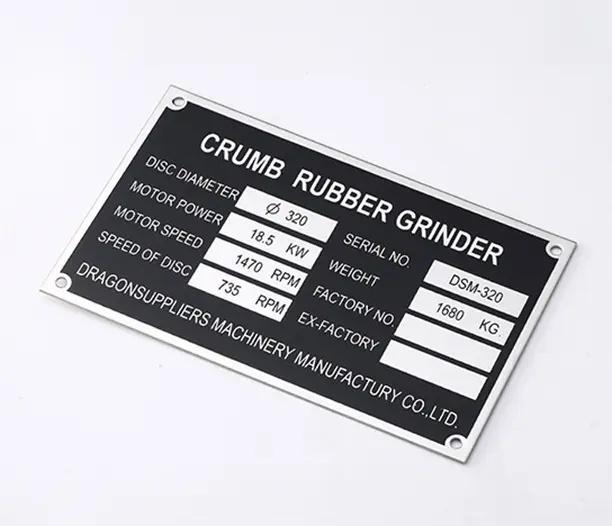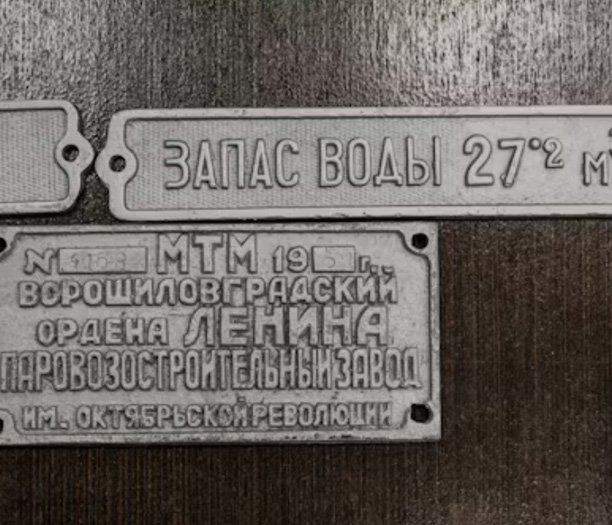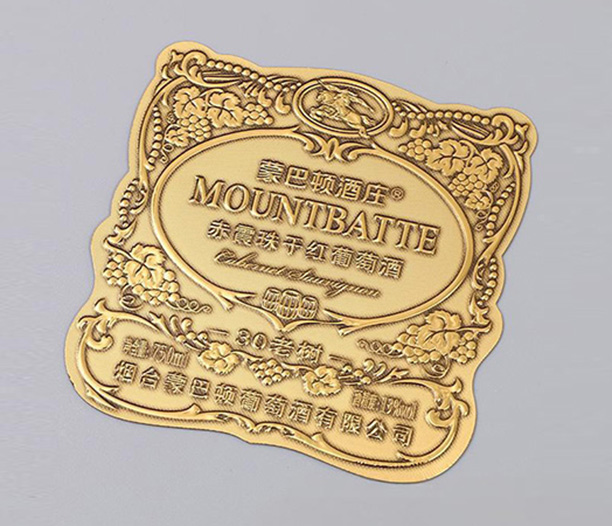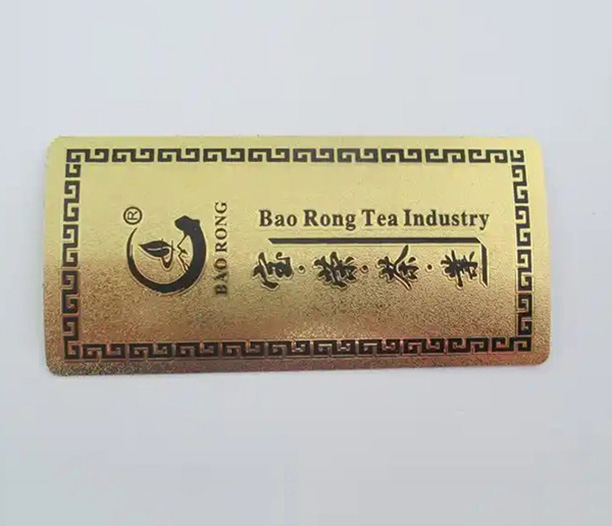In the complex and demanding world of hydraulic systems, safety, reliability, and efficiency are paramount. Among the many critical components ensuring these factors, hydraulic hose identification labels play a surprisingly vital and often understated role. Far more than just a piece of tape or a sleeve, these labels are a fundamental communication tool and a cornerstone of safe operation, maintenance, and compliance. Properly applied and maintained, they provide instant visual information that prevents catastrophic failures, streamlines troubleshooting, and ensures adherence to stringent industry regulations. Understanding the importance and implementation of hydraulic hose identification labels is crucial for anyone involved in the design, operation, or maintenance of fluid power systems.

What Are Hydraulic Hose Identification Labels?
Hydraulic hose identification labels are durable markers specifically designed to be attached directly to hydraulic hoses. Their primary function is to convey essential information about the hose assembly and the system it serves. Unlike generic labels, they are engineered to withstand the harsh operating environments common in hydraulic applications, including exposure to oil, chemicals, water, extreme temperatures, abrasion, UV radiation, and constant flexing.
These labels come in various forms:
Heat-Shrink Sleeves: Tubular sleeves that shrink tightly onto the hose when heated, providing excellent permanence and protection. Often considered the gold standard.
Self-Laminating Vinyl Labels: Feature a clear protective top layer that wraps over the printed information, shielding it from fluids and abrasion. Applied like tape.
Adhesive-Backed Labels: High-performance adhesives bond directly to the hose jacket. Require specific, clean surface preparation for longevity.
Wire-On Tags: Metal or plastic tags attached with wire, less common for hoses due to abrasion risks but used in specific scenarios.
The core purpose of all types is unambiguous: to provide critical identification at the point of use.
The Critical Information Conveyed by Hydraulic Hose ID Labels
The power of hydraulic hose identification labels lies in the specific data they communicate. Standardized information typically includes:
Maximum Working Pressure: This is arguably the most critical piece of information. It clearly states the maximum pressure (in PSI, BAR, or MPa) that the specific hose assembly is rated to handle safely. Exceeding this pressure is a primary cause of hose failure.
Hose Specification / Part Number: Identifies the exact type and size of the hose used in the assembly (e.g., SAE 100R2AT-06, EN 856 4SP-25). This is essential for ordering correct replacements.
Manufacturer Identification: The name or logo of the hose or assembly manufacturer, providing traceability and quality assurance.
Date of Manufacture / Batch Code: Crucial for tracking hose age, managing preventative maintenance schedules based on service life, and facilitating recalls if necessary.
Serial Number / Unique Identifier: Enables precise tracking of individual hose assemblies throughout their lifecycle, linking them to installation records, maintenance history, and test certifications.
Temperature Range: Specifies the minimum and maximum operating temperatures the hose assembly can withstand.
Fluid Compatibility: While less common directly on the label due to space, abbreviations or codes might indicate compatible fluids (e.g., "HF" for Hydraulic Fluid, "SK" for Skydrol). System schematics usually provide full details.

Why Hydraulic Hose Identification Labels Are Non-Negotiable for Safety
The consequences of hose failure in hydraulic systems can be severe: high-pressure fluid injection injuries (which are often life-threatening or limb-threatening), fires ignited by atomized fluid, environmental contamination from leaks, unexpected machine movement causing crush injuries, and costly production downtime.
Hydraulic hose identification labels are a frontline defense against these hazards:
Preventing Over-Pressure: Clear labeling of the maximum working pressure prevents technicians from inadvertently subjecting a hose to pressures beyond its rating during testing, commissioning, or operation. This is especially critical when replacing hoses or modifying systems.
Ensuring Correct Component Use: Labels confirming the hose specification and manufacturer prevent the installation of incorrect or substandard replacement hoses that may not meet the required pressure, temperature, or fluid compatibility needs of the specific circuit.
Facilitating Safe Maintenance: During troubleshooting or repair, technicians can instantly identify the pressure rating and specifications of a hose before working near it or attempting to disconnect it. This knowledge is vital for lockout/tagout procedures and safe work practices.
Traceability for Recall and Investigation: In the event of a failure, serial numbers and batch codes on hydraulic hose identification labels allow for rapid tracing of the hose back to its manufacturing source, aiding in root cause analysis and identifying if other hoses from the same batch pose a risk.
Compliance with Regulations: Labels are a visible demonstration of adherence to safety standards (like OSHA in the US, PUWER in the UK, or various Machinery Directives in the EU) which mandate the identification of components operating under pressure.
Industry Standards and Best Practices for Labeling
The effectiveness of hydraulic hose identification labels hinges on standardization and proper application. Key standards and best practices include:
SAE J1273 (Recommended Practice for Hydraulic Hose Identification): This is the primary standard in North America. It specifies the minimum information required (Pressure, Hose Spec, Manufacturer ID, Date Code/Batch), label durability requirements, placement, and legibility. It strongly advocates for permanent marking methods like heat-shrink sleeves.
ISO 18752 (Rubber hoses and hose assemblies — Wire- or textile-reinforced hydraulic types — Specification): While primarily a hose specification standard, ISO 18752 references marking requirements, aligning with the core principles of SAE J1273 for traceability and pressure identification.
ISO 4413 (Hydraulic fluid power — General rules and safety requirements for systems and their components): This broader system safety standard emphasizes the need for components to be clearly identified, including pressure ratings.
Placement: Labels must be located where they are readily visible after installation, typically near a fitting at one or both ends of the assembly. Avoid placing labels where they will be constantly flexed or abraded.
Durability: Labels must remain legible and securely attached for the expected service life of the hose. Heat-shrink sleeves generally offer the best permanence. Adhesive labels require pristine, oil-free surfaces and appropriate adhesive technology.
Legibility: Text must be large enough and contrast sufficiently with the background to be easily read under typical working conditions. Permanent printing methods (laser etching, thermal transfer) are preferred over less durable inks.
Implementing an Effective Hose Identification Program
Simply having labels isn't enough. A systematic approach is required:
Policy Development: Establish a clear company policy mandating the use of compliant hydraulic hose identification labels on all hydraulic hose assemblies, specifying the standard (e.g., SAE J1273) and minimum information required.
Label Selection: Choose the label type best suited to your environment (heat-shrink is often recommended for permanence). Ensure the label material and adhesive are compatible with your hydraulic fluid and operating conditions.
Information Standardization: Define exactly what information will be on every label and its format (e.g., "WP: 3000 PSI", "Hose: SAE 100R2AT-06", "MFG: ABC Co", "Date: YYMM", "S/N: 12345").
Assembly Procedure Integration: Make label application a mandatory, documented step in the hose assembly process. Ensure assemblers have the correct tools (heat guns for sleeves, surface cleaners for adhesives) and training.
Verification and Quality Control: Implement checks to ensure every hose leaving the assembly bench or workshop has a correctly applied, legible label containing all required information.
Documentation and Traceability: Link the information on the label (especially serial numbers) to assembly records, test certificates, and installation logs. Use barcodes on labels if feasible for digital tracking.
Maintenance Integration: Train maintenance personnel to read and understand the labels. Include checking label integrity and legibility as part of routine inspections. Replacement hoses must also be correctly labeled.
Auditing: Periodically audit systems to ensure labeling compliance and legibility.
The Tangible Benefits Beyond Safety
While safety is the primary driver, effective use of hydraulic hose identification labels delivers significant operational and financial benefits:
Reduced Downtime: Quick and accurate hose identification speeds up troubleshooting and the procurement of correct replacement parts, minimizing machine downtime.
Improved Maintenance Efficiency: Technicians spend less time tracing circuits or trying to identify hose specs manually. Preventative maintenance scheduling based on hose age (via date codes) is enabled.
Inventory Management: Clear part numbers on labels simplify hose inventory management and reordering.
Cost Savings: Preventing failures avoids costs associated with downtime, fluid loss, component damage, environmental cleanup, and potential injury claims. Using the correct hose the first time avoids premature failures and rework.
Enhanced Quality Control and Warranty Claims: Traceability through serial numbers aids in quality control investigations and simplifies warranty claims with manufacturers.
Professionalism and Compliance: Well-labeled systems demonstrate a commitment to safety, professionalism, and regulatory compliance, which can be important for audits, insurance, and customer perception.
Hydraulic hose identification labels are far more than a regulatory checkbox or a minor accessory. They are a fundamental engineering control and communication tool essential for the safe, efficient, and reliable operation of hydraulic systems. The small investment in implementing and maintaining a robust labeling program using durable, standards-compliant hydraulic hose identification labels pays enormous dividends in preventing injuries, protecting equipment and the environment, minimizing costly downtime, and ensuring operational excellence. Ignoring their importance is a risk no responsible operator or maintenance professional can afford to take. By making clear identification a non-negotiable standard practice, the fluid power industry continues to enhance safety and performance across countless applications worldwide.






